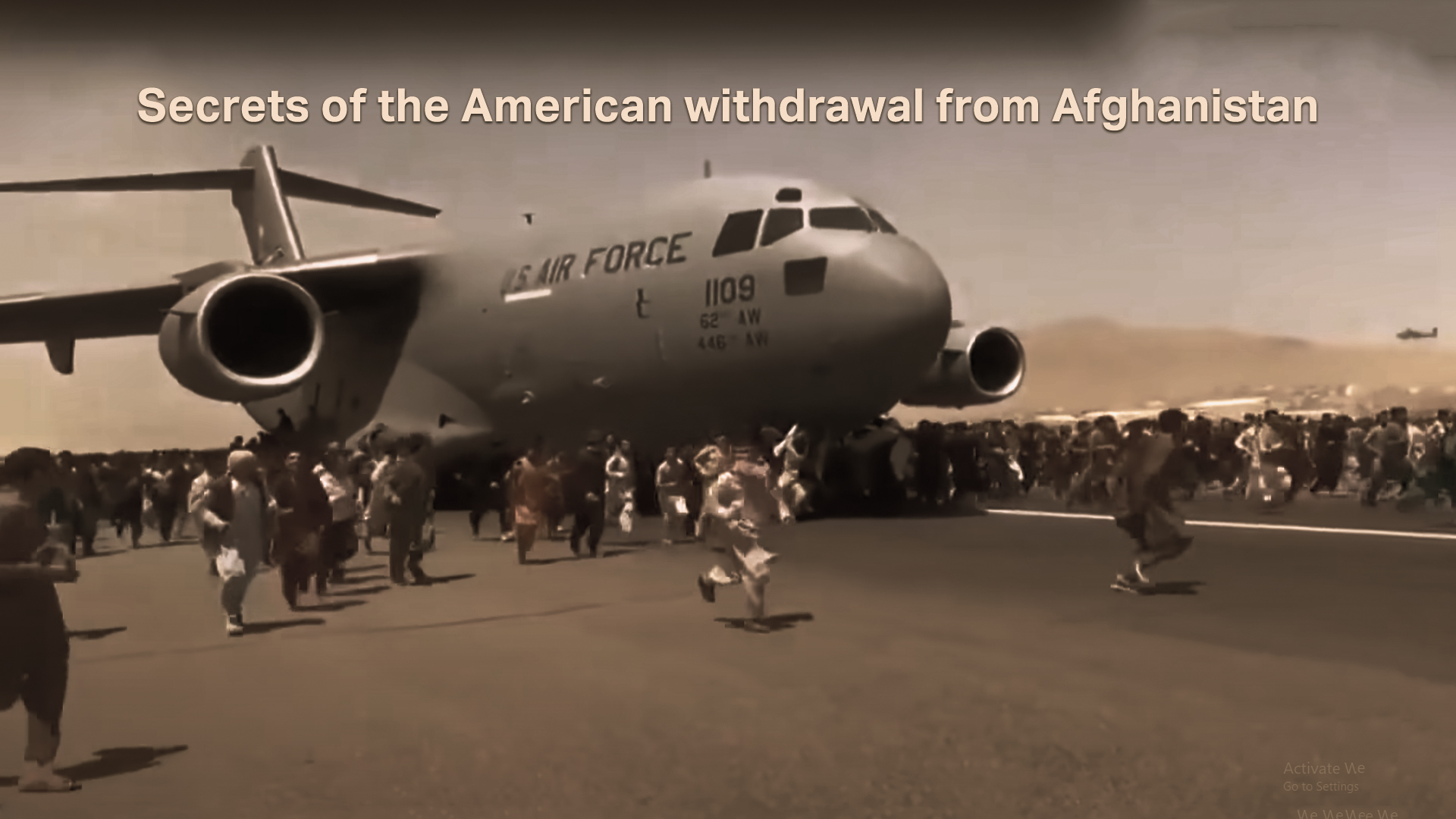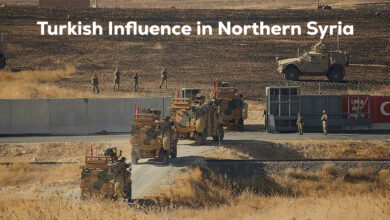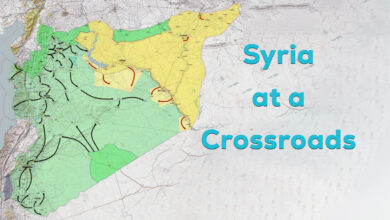Secrets of the American withdrawal from Afghanistan

The US occupied Afghanistan as a retaliation for the September 11, 2001, and overthrew the Taliban regime allied with al-Qaeda in the name of fighting terrorism and forming a pro-Western government. Ten years after this incident, the liquidation of Osama bin Laden and the death of Mullah Omar in mysterious circumstances, many calls emerged inside the US to withdraw the American forces from this country which paved the way for indirect talks between the US and the Taliban movement which resulted in the signing of a peace agreement between the two parties in Doha in February 2020, which was summed up by an American withdrawal from the country in exchange for the movement’s pledge not to launch any hostile acts against America and its interests from its areas of control. So, the withdrawal came after negotiations with the Taliban.
Although the US administration confirmed that it had achieved its goals from its military campaign in Afghanistan, many political analysts noted to America’s defeat in Afghanistan and that the US came out of it empty-handed, citing its inability to eliminate both the Taliban and al-Qaeda, and the great military cost it incurred, which were estimated at a trillion dollars, according to American sources, in addition to its failure to invest the mineral resources and energy sources that characterize the country, and which are likely to be controlled by some neighboring countries such as China and Iran, but it should not be forgotten that the bill of the American war is paid from the wealth of the region it controls as in Iraq, the Gulf War and others. The observer of the old and, relatively, recent American policies realizes that behind every American step lies a deliberate strategy that goes beyond the idea of controlling some wealth or getting rid of the Taliban movement. One of the most notable signs of this is the growing influence of some competing powers that seek to dominate the geopolitical situation in Central Asia, such as China, Russia and Iran. According to modern standards of international conflict, America cannot engage in a direct confrontation with these powers, so it tends to make creative chaos in the region that negatively affects the economic, military, political and security strategies of those countries. It seems that Turkey’s involvement in this chaos is similar to its involvement in the chaos that some countries of the Middle East suffer from, and this clearly demonstrate the new US strategy of hegemony. Therefore, the issue appears to be an issue of an ongoing international conflict rather than an issue of victory or defeat.
Before the US withdrawal
- The Belt and Road Initiative is inspired by the Global Silk Road, where the Chinese continued to implement its project and many countries of the world raced to be part of this project. On April 16, 2019, the Chinese Assistant Minister of Foreign Affairs, Chen Xiaodong, indicated that China signed cooperation documents for the Belt and Road Initiative with 17 Arab countries, and established a strategic partnership and a comprehensive strategic partnership with 12 Arab countries, in addition to Chinese investments in billions of dollars in many Asian countries, including Afghanistan, and the memorandum of understanding for the 25-year agreement signed with Iran. This stability, which was created by the American presence in Afghanistan, serves this project, which threatens the American interests in this part of the world.
- As an Islamic state member of NATO, Turkey has nominated itself to manage the Afghan file, which is the largest supporter of the Turkistan Islamic Party (Chinese) and the world’s first exporter of mercenaries, especially Syrian mercenaries from the Syrian coalition, and it is now working on recruiting these mercenaries to go to Afghanistan, which may mean creating chaos in Central Asia similar to the Syrian and Libyan crisis, which may threaten the national security of the countries surrounding Afghanistan, especially since Turkey has great attractiveness through its soft power over the Turkish-speaking peoples in this region, and there may be a policy behind Turkey’s effective involvement in Afghanistan as a balanced country between Russia, Iran, Turkey, China and Pakistan.
- There is a weakness in the political Islam movements in southeast Asia, which some Western countries used to invest in to secure their hegemony over the region. Therefore, the control of a militant organization over Afghanistan may raise the morale of those movements in Kashmir, the Philippines, East Turkistan and others, and the resumption of their activities. The al-Nusra Front in Idlib is one of the most prominent indicators of this, after the Taliban took control of the government.
- There was constant communication by China, Russia and Iran with the Taliban movement based on the principle of the common enemy, to the extent that Iran formed Afghan Shiite militias similar to the Shiite Popular Mobilization Forces (PMF). Therefore, it is expected that America will not rely much on the Taliban to achieve its agendas, knowing that there is an increasing activity of both ISIS and al-Qaeda in Afghanistan, which may turn into a major stronghold of ISIS after the defeats it suffered in Syria and Iraq.
The US withdrawal
- There was no complete coordination between the American withdrawal and the Afghan government, as if the US had given a large space to the Taliban movement to expand quickly and enter the Afghan capital, meaning that there was an agreement between the US and the Taliban movement for the Taliban to take over power. The terms of the peace agreement signed between the two parties in 2020 prove this.
- The American withdrawal from Afghanistan made the countries of the world fear the expansion of jihadist ideology and reconsider the fact that, Afghanistan with Pakistan, constitute the source of extremist and jihadist groups, and thus threaten the national security of neighboring countries, including Russia and China.
- The agreement was concluded between America and the Taliban in the absence of the Afghan government, and according to the American statements, the government refused to make an agreement with the Taliban. It seems that the corruption of the Afghan government was the reason why the Afghan army soldiers did not resist the progress of the Taliban movement, and the escape of both the country’s president and his defense minister indicates this fact. It seems that many of the military teams will join the movement with all the weapons supplied by the US administration. The rapid expansion of the Taliban and its control of many areas without resistance, reminds us of the rapid expansion achieved by ISIS in Iraq and Syria.
- The miserable scenes at Kabul Airport gave the international community an impression of the continuing growth in the danger of violent jihadist ideology and the possibility of the emergence of new extremist organizations that may be more violent than al-Qaeda and ISIS, which threatens international peace and security.
Regional situations
All these matters and others will certainly affect the regional security in Central Asia, and each country will try to secure its national security and regional interests. All countries have an interest in friendly relations with the new regime in Afghanistan or the consolidation of its hegemony in the region. The traditional alliance between Russia, China and Iran is expected to continue on the principle of confronting US threats and its allies with the deepening of strategic relations between Turkey and Pakistan, which are supported by the West. It is expected that the Afghan forces will disperse between these two axes in the event of a new civil war.
From this context, we understand that the US, with its withdrawal from Afghanistan, despite what is said about the material losses and the failure to achieve its full goals, has mixed the cards in Central Asia. With the different international goals and interests in Afghanistan, several political, economic and military differences between those countries may be emerged. Turkey, with its current policy, will be the main driver in creating chaos in the region, which will distract both China and Russia in implementing their own projects in the region, in addition to creating suitable conditions for the return of this activity of jihadist organizations on the one hand, and on the other hand, reducing US military expenditures in international crises and employing them in a deliberate manner in other regions will contribute to the faster growth of their economy and increase the economic gap with China in their favour. As for the issue that the US has lost the war in Afghanistan, this is related to the results that will reap after its withdrawal and the extent to which it will be able to guarantee its global hegemony and national security.




